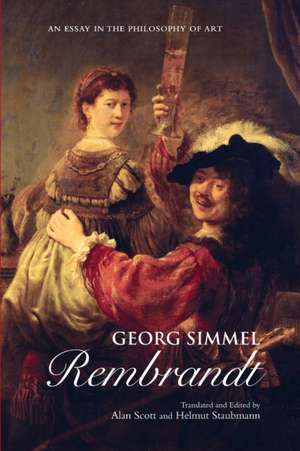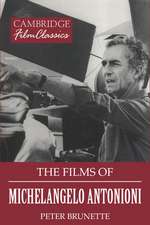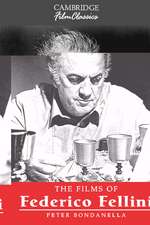Georg Simmel: Rembrandt: An Essay in the Philosophy of Art
Editat de Alan Scott, Helmut Staubmannen Limba Engleză Paperback – 6 iun 2005
| Toate formatele și edițiile | Preț | Express |
|---|---|---|
| Paperback (1) | 444.45 lei 6-8 săpt. | |
| Taylor & Francis – 6 iun 2005 | 444.45 lei 6-8 săpt. | |
| Hardback (1) | 999.82 lei 6-8 săpt. | |
| Taylor & Francis – 6 iun 2005 | 999.82 lei 6-8 săpt. |
Preț: 444.45 lei
Nou
Puncte Express: 667
Preț estimativ în valută:
85.06€ • 92.36$ • 71.45£
85.06€ • 92.36$ • 71.45£
Carte tipărită la comandă
Livrare economică 22 aprilie-06 mai
Preluare comenzi: 021 569.72.76
Specificații
ISBN-13: 9780415926706
ISBN-10: 041592670X
Pagini: 198
Ilustrații: 2 b/w images
Dimensiuni: 152 x 229 x 13 mm
Greutate: 0.34 kg
Ediția:1
Editura: Taylor & Francis
Colecția Routledge
Locul publicării:Oxford, United Kingdom
ISBN-10: 041592670X
Pagini: 198
Ilustrații: 2 b/w images
Dimensiuni: 152 x 229 x 13 mm
Greutate: 0.34 kg
Ediția:1
Editura: Taylor & Francis
Colecția Routledge
Locul publicării:Oxford, United Kingdom
Notă biografică
Georg Simmel (1858-1918) was a German sociologist of high regard. His most famous work, which Routledge also publishes, is The Philosophy of Money.
Alan Scott is Professor and Helmut Staubmann is Associate Professor, both in the Department of Sociology at the University of Innsbruck, Austria.
Alan Scott is Professor and Helmut Staubmann is Associate Professor, both in the Department of Sociology at the University of Innsbruck, Austria.
Cuprins
Editor's Introduction: Georg Simmel on Rembrandt: Understanding the Human Beyond Naturalism and ConventionalismChapter One: The Expression of Inner LifeContinuity of Life and the Movement of ExpressionBeing and Becoming in a PortraitThe Series of Portraits and DrawingsReserve and Openness of the Portrait FigureThe Circle in the Depiction of a PersonThe Animation of the PortraitSubjective Realism and the Self-PortraitArtistic ProcreationLife's Past in the PaintingThe Representation of MovementThe Unity of the CompositionClarity and DetailingLife and FormChapter Two: Individualization and the GeneralType and RepresentationTwo Concepts of LifeObservations on the Individuality of Form and on PantheismDeathCharacterBeauty and PerfectionThe Individuality of the Renaissance and of RembrandtTypes of GeneralityThe Art of Old AgeThe Aspatial GazeMoodHuman Fate and the Heraclitean CosmosChapter Three: Religious ArtObjective and Subjective Religion in ArtPietyConcrete Existence and Religious LifeThe Type of Unity in the Religious PaintingsIndividual Religiosity, Mystique and CalvinismInner QualityReligious-artistic CreationLight: Its Individuality and ImmanenceExcursus: What do we see in a work of art?Dogmatic ContentsIn ConclusionThe Capacity to Create and to FashionAntitheses in ArtAppendix

















